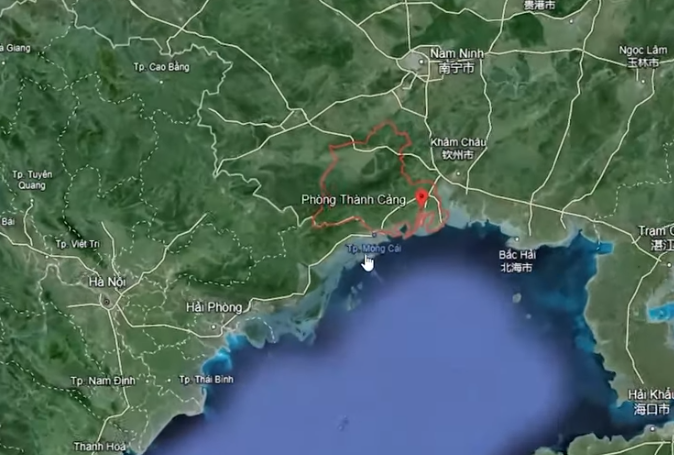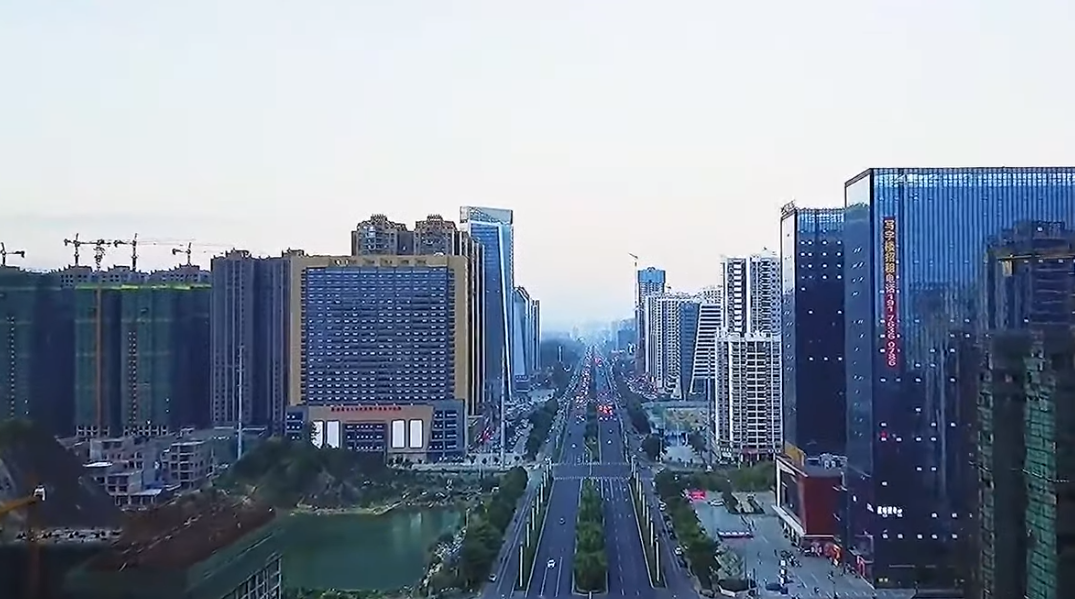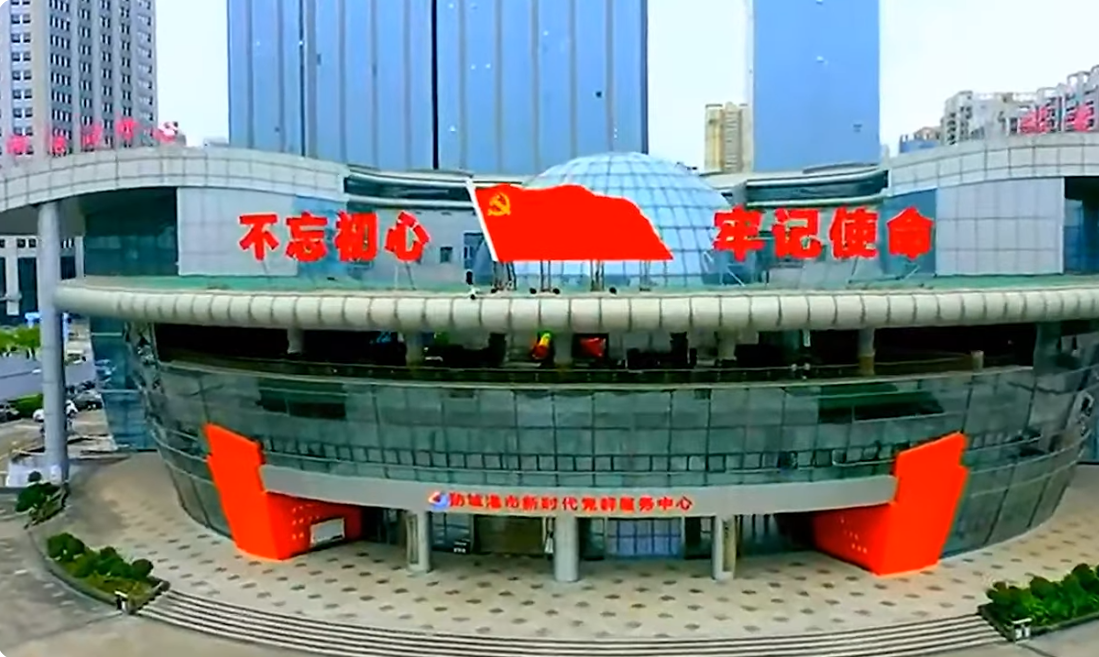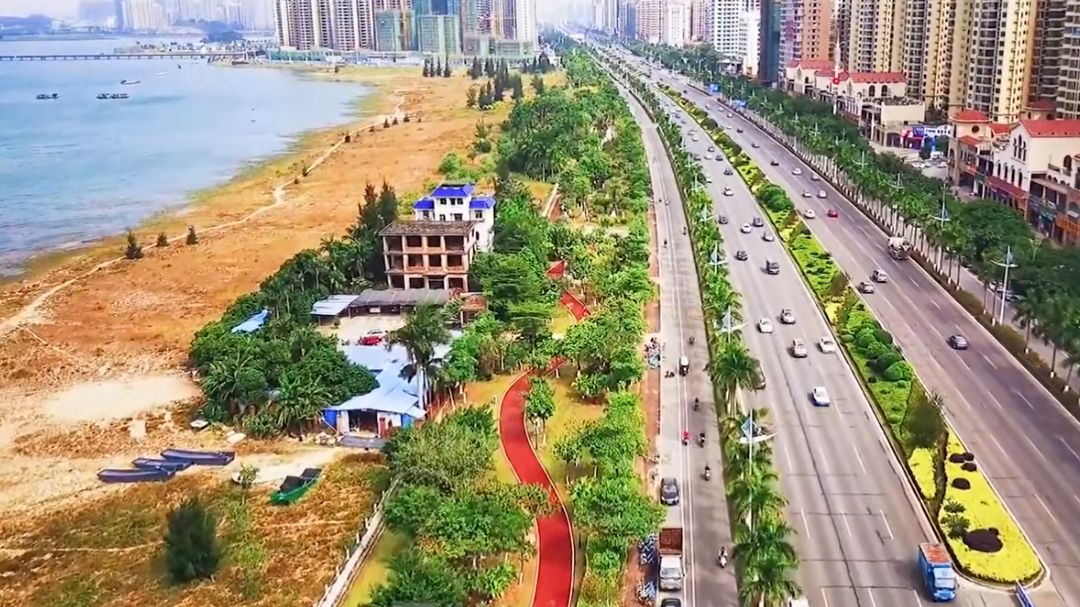Whenever mentioning the border between Vietnam and China, people on the other side often refer to Guangxi, or its full name, the Guangxi Zhuang Autonomous Region. This is an area that occupies a significant part of the border between China and Vietnam, not only on land but also at sea.
This is also a place with many economic and tourism cooperations with Vietnam, one of which is Fangchenggang, a port city with a rather cool name and has many cooperative relationships with provinces and cities in Vietnam, especially coastal provinces and cities.
However, when it comes to historical factors, Fangchenggang was once part of Vietnam and was eventually ceded to China by France, shaping the border as it is today.
The city adjacent to Vietnam

Fangchenggang is a large city in the southwestern region of China. This is a position that we are gradually shaping; it is not only a coastal city but also a port city and a border city, adjacent to our Vietnam both on land and at sea with the Gulf of Tonkin in front. The area of this city is quite large, reaching up to 6,173 km2, which is equivalent to the area of the neighboring Quang Ninh province, but the population here is only about 1 million people. Its special location helps Fangchenggang be associated with many beautiful phrases, such as the southwestern gateway of China or the border gem. For Vietnamese people, Fangchenggang is linked to historical stories.
The area ceded by France to China
As mentioned, Fangchenggang is a place that once belonged to Vietnam in the past, and not only that, a series of areas such as Dong Hung, Thuong Tu, Jiangping, and Bai Long today also used to belong to Vietnam for a long time until the 19th century. During the process of dominating Vietnam, France made some mistakes and signed the Franco-Chinese Treaty with the Qing Dynasty in 1887. This treaty resulted in these regions falling into the hands of China. According to the map of the northern border in 1879, the border between Vietnam's Quang Yen province, now Quang Ninh, and China's Guangdong province is the Yang River, also known as An Nam River or Fangcheng River, flowing into the area of Fangcheng port.
In the early 16th century, hundreds of families from 12 clans in Do Son commune, Nghia Duong district, Hai Duong province migrated here, which was the northeastern region of Great Vietnam, to clear land for agriculture and go to sea for fishing. Then, in the latter half of the 19th century, after completely invading Vietnam, the French colonists, along with the Qing Dynasty of China, signed the Tianjin Treaty, and in 1887, the two sides signed the Franco-Chinese Convention to implement Article 3 of the Tianjin Treaty. The content of this convention aimed to delineate the border between Northern Vietnam and China to facilitate China's recognition of France's protectorate rights in Northern Vietnam.

The French colonists agreed to cede 750 km2 of land from Tụ Long, Hà Giang to Yunnan province and ceded nearly 10 communes from Kiền Duyên and Bát Tràng communes of Quang Yen province, now Quang Ninh, to China. Thus, the border between Northern Vietnam and China was shifted southward, using the Ca Long River as the boundary. The land of 10 Vietnamese communes became Chinese territory, and the people in those 10 communes became Chinese citizens, thus forming the Vietnam-China border. But today, revisiting a bit of history reveals that some northern lands once belonged to our country before historical factors intervened and brought them to China.
The greenest city in China
Returning to the story of Fangchenggang, this city is praised with beautiful phrases by the Chinese, as mentioned above, such as the southwestern gateway or the border gem. This city is praised for its advantages in mountains, forests, seas, and very fresh climate. It is even referred to as the land of oxygen, enough to say how fresh it is. A specific evidence is that in 2019, Fangchenggang was honored as a national forest city of China.

This city has persistently pursued the goal of green forests and green mountains, which are golden forests and silver mountains, to build a national forest city, actively mobilizing all resources for investment, with the total forest area of the city reaching 5.58 million mu. The forest coverage rate increased from 59% to 61% in a few years, and the per capita green area reached 20.27 square meters. The urban greening rate reached 41%, a very impressive number, but simply put, this is a very green city. The value of Fangchenggang lies not only in the greenery of its forests and trees but also in its climate. This city is located at a low latitude and shares many similarities with neighboring cities in Vietnam, especially Quang Ninh.
Fangchenggang is heavily influenced by the monsoon and experiences a lot of rain, with fog often appearing in the autumn and winter, similar to northern Vietnam. Because it truly once belonged to our country, fog appears in the late winter evenings and early mornings. And of course, we must also mention the value of the sea in Fangchenggang. The entire Fangchenggang has a coastline stretching 580 km, with beautiful and extensive beaches. The marine area in Fangchenggang is also very vast, with three islands, three bays, and even mangrove forests in this area.
Strategic role at the border
Fangchenggang is not only attractive due to its climate and the freshness of nature but also due to its economic, political, and defense roles. This is a key city in the economic region of Guangxi and the Gulf of Tonkin area of China; it is also the only city in China that borders ASEAN on land, by river, and by sea. There are many connections with Southeast Asia through Vietnam or the South China Sea. Fangchenggang was officially established in 1993. Since then, this city has risen from a fishing village to a developing city in China.

According to the latest statistics I found, in 2018, it was estimated that the GDP in Fangchenggang had increased up to 40 times compared to the time it was newly established, and the average income per person also increased accordingly. A decade ago, the average income per person in Fangchenggang was the highest in Guangxi, reaching over 10,000 US dollars per person per year. Currently, this place is considered an emerging city in China in terms of economic and tourism development.
Connections with Vietnam
Mentioning Fangchenggang once again, we must revisit the story of its connections with Vietnam. It must be acknowledged that Fangchenggang has a very strong connection with Vietnam through specific economic activities, particularly with the neighboring province of Quang Ninh. For many years, important tourism routes between the two provinces have been exploited, especially marine tourism. Tourist boats from Fangchenggang have been connecting with Ha Long in Quang Ninh for over a decade, facilitating people from both sides to travel and explore the natural beauty. The opening of the Ha Long-Fangcheng tourism route is a positive result in promoting and concretizing the multifaceted cooperative relationship between these two cities.
This has been marked by many cooperation agreements, especially in the tourism sector. Not only cooperating with Quang Ninh, adjacent to Vietnam, Fangchenggang also has many relationships with other coastal provinces of Vietnam, such as Da Nang. After Quang Ninh, Da Nang has a favorable position for trade, commerce, and tourism with Guangxi of China, specifically with Fangchenggang. Therefore, in recent times, the two sides have strengthened their cooperative exchange, especially in the fields of port tourism and goods exchange.
When mentioning the economic cooperation relationship between Vietnam and China, Fangchenggang is always mentioned first. Fangchenggang, as a locality with important international border gates for trading goods with Vietnam, has continued to promote the convenience of customs clearance to contribute to accelerating trade growth between the two sides. The parties are also looking to further leverage the advantages of the Dongxing-Fangcheng railway currently under construction to enhance import and export through border gates with Quang Ninh, creating conditions for Vietnamese people in Fangchenggang to settle and develop.
In its strategy, Fangchenggang is always linked with Vietnam and economic activities at the border with our country. They want to promote tourism and enhance import-export activities at the border with Vietnam. In addition, Fangchenggang is also aiming to further improve logistics activities, leveraging its port advantages, and they also want to promote the development of the metallurgy or pharmaceutical industry. Thanks to its inherent advantages, it is certain that Fangchenggang will have even deeper cooperative relationships with Vietnam, thanks to its special position. Not only on land, by river, and by sea, but also in historical relationships.
